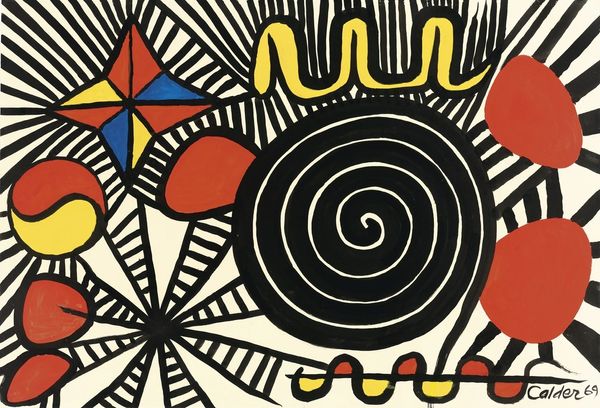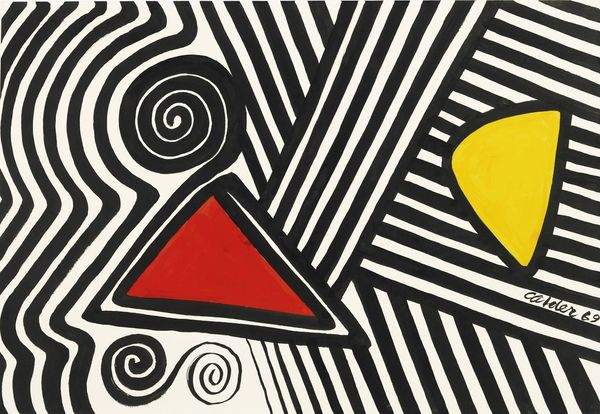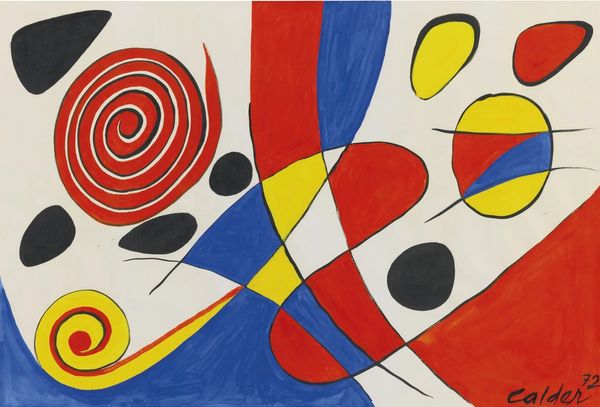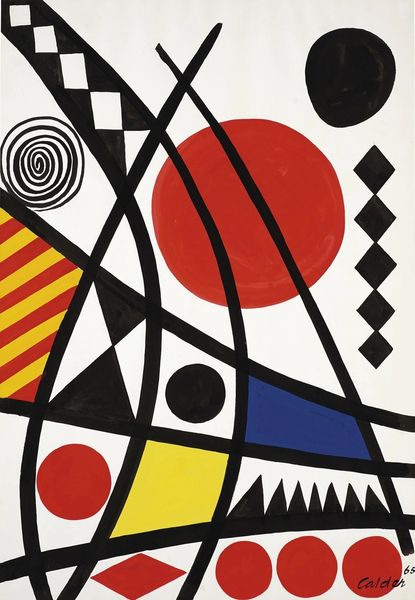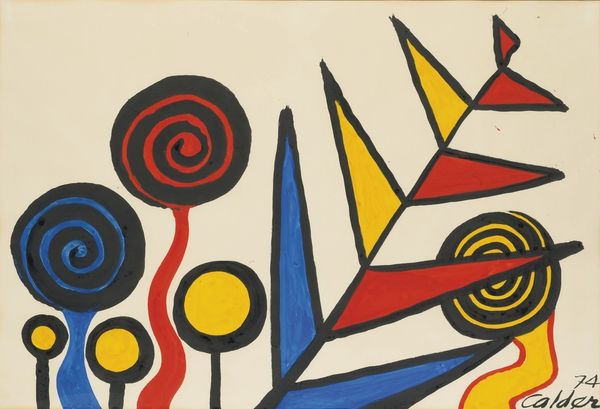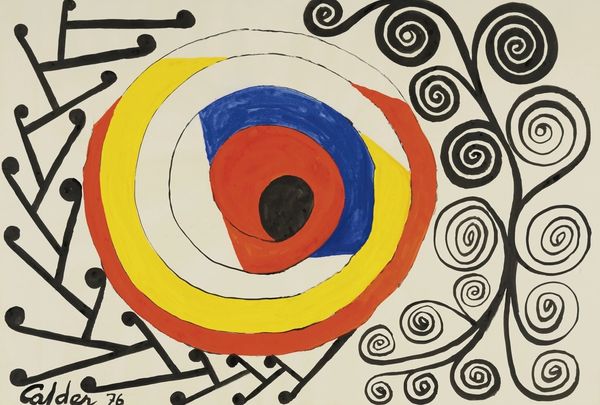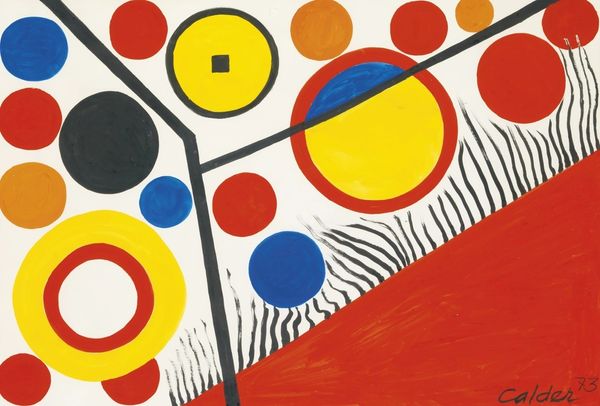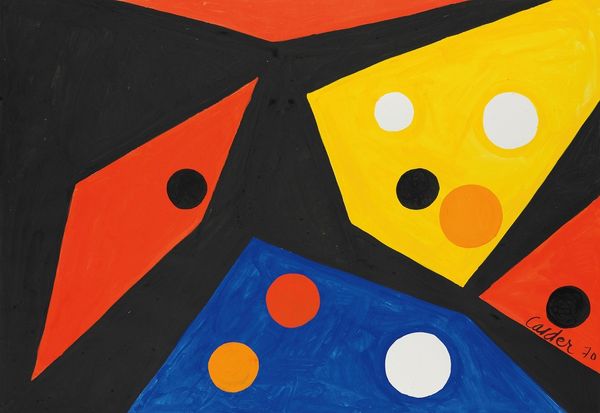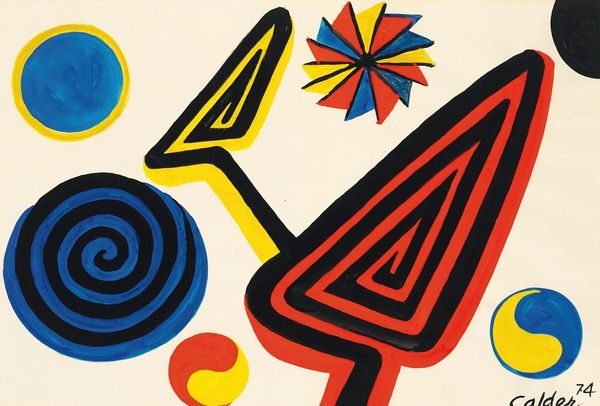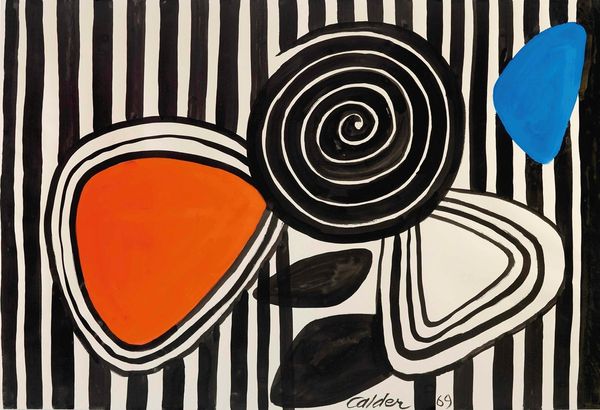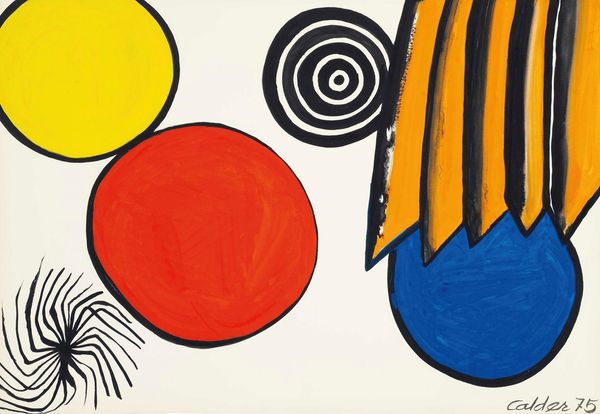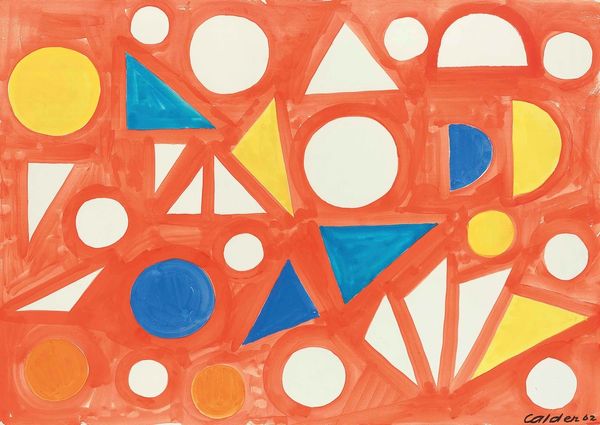
Copyright: Modern Artists: Artvee
Editor: This is Alexander Calder's "Ball Game," painted in 1974 with acrylic paint. The geometric forms and bold colors create such a playful, almost kinetic energy! What can you tell me about it? Curator: This piece presents a great opportunity to consider the materiality of art and its connection to industrial production. The clean lines, bold colors, and geometric shapes weren’t just aesthetic choices. Think about Calder's use of acrylic. It’s a synthetic material, mass-produced. How does this choice, compared to traditional oil paints, for example, influence the reception of the work? Editor: I hadn't thought about that. It gives the painting a flatter, almost printed quality. Does that link to pop art's fascination with consumer culture? Curator: Precisely. And consider how the work relates to the social context of its creation. Post-war industrialization had profoundly shifted the landscape of both art and labor. The use of readily available, standardized materials like acrylic, challenges the traditional idea of the artist as a skilled artisan. Could this aesthetic reflect the increasing mechanization and standardization of labor? Editor: It's almost like he's embracing the industrial process, but in a very bright, joyful way. The title "Ball Game" makes me think about mass entertainment, another product of industrialized society. Curator: Good observation. What does thinking about the repetitive shapes suggest about labor or process to you? Editor: I hadn’t really considered it like that, focusing on its relation to labour and material instead of a simple visual. Thank you! Curator: Absolutely, examining materiality reveals the relationship between art, labor, and our changing material world.
Comments
No comments
Be the first to comment and join the conversation on the ultimate creative platform.
